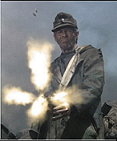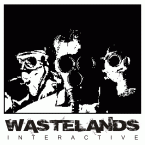Uxbridge
Posts: 1505
Joined: 2/8/2004
From: Uppsala, Sweden
Status: offline

|
I have decided to release the ETO-scenario a little earlier than I first thought I would. The reasons are partly that several people have "voiced" a desire to give it a try; partly that the 1.70 patch coming up in a month or two might make it obsolete.
It’s in many ways a beta-scenario, for players to try new ideas and solutions to game issues; maybe take some of these to their own scenarios. I haven’t played it against the AI since I don’t play the game that way, only made calculations based on analysis and scrutiny of the game files. It should be okay to try against the AI, though, since no changes should be of the kind to distract the basic system.
In this download I have added my own graphics, those that we use in our PBEM-games here in Sweden. They are not necessary to play the game. Without them some oddities may occur on the map, however, such as cities disappearing or Eiffel towers showing up at impropriate places. Another effect is that the symbols showing the locations of Axis' trade and also the general resources will not come out on the map.
Finally, remember – this scenario is just a brainchild of mine, not an official product. Wastelands, therefore, have no obligations whatsoever to help with issues occuring when playing ETO. I myself will listen to any problems, but can’t promise to help either, since in most cases it will probably be beyond my capacity to do so. It will be good to ponder upon this before starting any longer games.
Hope you like it! 
ETO
Current version is 1.3 and exist in two versions, standard and a special PBEM. It is possible to play the standard version as PBEM too, only the special scenario includes rules and units for HQs and corps-upgrade limitation. It needs a little more management.
Just click on "Ladda ner".
Changes made to the standard 1939-scenario.
1. LWD-effect has been raised to 40 and the time when each country raise it’s level have been re-worked. Now, for most of the war, German units are the undisputed kings of the battlefield and only Germany will ever reach level 5. UK and USA will both reach level 4. Between the Polish campaign and the attack on France, the German army will however see a major reorganization, manifesting itself in two steps of raised LWD. An attack on France prior to May 1940, will thus have to be made with a much less competent German army (this is a game balancing measure, to make a haphazard early German attack less likely to succeed).
2. The general likelyhood of retreats have been raised.
3. The former combat modifications for attacking from different hexsides have been reversed. It is now no modification when attacking from several directions. The exceptions is 2-1 and 6-1 (defender encircled) that is more effective (x1.2 and x2.0 respectively). The reason for this change is not to be found in comparisons with reality, but to avoid certain game problems inherent in the system itself.
4. Moved part of German economy outside of Germany proper. Thus certain hexes in Norway/Sweden (iron ore), Finland (nickel), Yugoslavia (rail-transit country for most Balkan and Turkish imports) and Romania (crude oil and refined fuel) are German ”territory” from the start. Germany needs to make sure her opponents doesn’t get these areas, lest she will lose some of her resources.
5. Moved part of British economy outside of UK. Thus certain hexes in Palestine, Kuwait, Iraq and Iran hold British resources. This is supposed to symbolise UK’s oil reserves in the Middel East. UK need to protect these areas lest she will lose some of her resources.
6. Lowered German, British and Soviet initial war economy. These countries need to be very restrictive with spending PP’s the first year of the war. This is especially true for Germany, which already have a large army with a large upkeep to pay.
7. Losses to attacker is generally more severe now, so a superior attacker should not expect to walk over anything weak in his path. There’s always some losses regardless of odds.
8. Attacks at 2-1 and 3-1 is more favourable than before. It is now possible for an economically strong, but operationally weak nation to wear an opponent down by limited attacks all along the front.
9. Winter move and combat penalties raised even a bit further.
10. The cost of buying units, upgrading and replenishing have been raised with approximately 50 %.
11. Paratroopers have a very low AP-allocation at low LWD-levels (Land Warfare Doctrine).
12. Changed the orientation of Sweden, Norway, Denmark and Spain to Comintern and fixed their political strength to 50. It is now prohibited to do any action with these countries except declaring war on them. The reason is (A) now both the Allies and the Axis can declare war on these countries, and (B) to emphasize that the chance of any Scandinavian country joining the war by itself borders on the ludicrous, and (C) Franco was firmly determined to stay out of the war. Germany can declare war at any time at the Axis player’s desire. Allied players can only declare war if they have at least 50 DPs.
There is one side effect of having Scandinavia Comintern. When any of the above mentioned countries goes to war, they will fall under the leadership of the USSR player. Once this happens, the countries.csv should be altered to instead make them either Allied or Axis partners. If not, the play sequence in PBEM-games will be more complicated with more mails sent for each turn.
13. The cost for coup d’etats have been lessened considerably. As a house rule, only Hungary, Romania, Bulgaria, Yugoslavia, Greece, Turkey, Iraq and Persia should ever be subjected to a coup d’etat. The object of this paragraph is to re-create the uproar of the Balkan and Middle East politics in the early stage of the war. As part of the same house rule, no diplomatic activity should be allowed at all, once all major countries are at war.
14. The orientation of Romania has been changed to pro-Allied and Yugoslavia and Greece to pro-Axis to better reflect the pre-war situation. This is especially bothering for Germany with her economy (oil supplies) thus threatened by an early entry of Romania on the Allied side. Hopefully, this change, in addition to 16. above, will make for a rather tense political situation.
15. To add a little spice to the political part of the game, and with the termination of DP activity after total war (#16), the allotment of DPs has been slightly raised for the fractional leaders.
16. Slovakia is no longer a playable nation. All Slovakian units are gone and the Slovakian territory belongs to Germany.
17. The initial German PP-level has been raised to some extent. The Axis player should be very careful husbanding this pool. Initially he will have a negative production.
18. Have added a vast number of impassable hexes, foremost in North Africa, but also in certain mountain passes. The reason for the North African area inhibitions is to better portray the difficulty of fighting inland from the Via Balbia coast road. A number of desert lanes have been created to the south. The player should see this area as laying closer to the coast than the scale of the game suggests. Instead of just a vast open space, these lanes will add a number of interesting choices, made even more exciting by the existence of supply problems, movement penalties and aerial reconnaisance.
19. Each country have a number of units with tech levels in advance of the present setting. These are to be seen as the core of the peace-time armies and serve basically as a mean to give the players more choices.
20. Due to inability to create a workable solution for the North African supply problems, an Italian DAK contingent will now replace the German one. No German units are allowed in North Africa, save air units.
21. Iraq is now neutral at start.
22. Have added a number of new cities in Sweden and Norway to enable operations in Scandinavia. The earlier changes for motorized movement have therefore been reversed.
23. Trade between Germany, Italy, Hungary, Yugoslavia, Romania, Bulgaria and Greece now possible by using a ”convoy” between Chemnitz and Milan. SMP have to be used. It is thus possible for Germany to either bolster these countries with PP, or to arrange import from them, adding PP to Germany’s PP-pool. The cities that are involved in this trade have a white $-sign on a blue circular plate in their city symbols. The Hungarian city of Csongrad and, especially, Yugoslavian city of Nis, is a prerequisite for some of the trade between Germany and the Balkans. This is because of the high importance of the railroad running through these countries.
24a. Oslo can now be reached from the Baltic Sea rather than from the North Sea. Despite this being a bit unrealistic, it will enable the Germans a chance to invade Norway as they did historically. Have added Trondheim as a port that can be accessed from the North Sea and Norwegian Sea. The expectation is that there now can be a land campaign between Germany and UK, with Oslo and Trondheim as principal bases. Of course, the Axis player can always try to take Trondheim and Narvik as Germany did historically, but then he has to pass the North Sea coastal waters, the North Sea and (in the Narvik case) the Norwegian Sea.
24b. A prerequisite for 27a above, is that the city of Aarhus is owned by Germany. This is to simulate the fear of German air power that would keep the Western Allies from intervening in the Skagerack. No German unit actually have to be in Aarhus; it will suffice that the hex is owned by Germany. Historically, Denmark and Norwegen was attacked in a different way. I have included this variant, however, to potrait the fact that Germany probably wouldn’t have had the power to protect a German-Norwegian supply line without the possesion of Denmark.
25. UK now have a number of BEF-units at start. These have tech levels higher than the present setting and symbolize the core of the proffesional British army. Once lost, these units can be re-created only when UK reach these tech levels. The UK player should therefore guard them jealously.
26. Changed Edinburgh to normal city and added Scapa Flow. It is now possible to access the Norwegian Sea and the North Sea coastal waters from Scapa Flow.
27. Made Batumi and Samsun into ports. It is now possible for the Russians to fully supply or reinforce Sevastopol by sea, even if the Axis has cut it’s land communication. They may even continue basing naval units if Sevastopol is lost. Hopefully, this change may lead to some action in the Black Sea.
28. Added the North Sea coastal waters. This area replaces in most regards the North Sea, which has been moved further north. It is therefore now possible for the Royal Navy to guard the exit from the Baltic Sea, without having to expose itself to German air power. To influence the North Sea with air units, one now has to have control of either Scotland or the southern part of the Norwegian west coast.
29. ZoC is now generally stronger than before. This is to lessen the possibility to penetrate long frontlines where some countries will have problem covering their borders.
30. Lowered the air losses in ground attacks sligthly.
31. Lowered the effect of fortifications with one third.
32. Broke up some of the continous fortification lines, forcing the player to defend more heavily the gaps between the hexes.
33. Removed some negative effect of multi-hex combat. This alters paragraph 3. above (the text in that have been altered as well).
34. Added 1 SMP for all Balkan neutrals.
35. Air attack effectivness in deserts have been raised, stressing the importance of air superiority in this theater.
36. Re-worked the production locations in the Caucasus slightly, placing more resources close to Baku.
37. Raised the defensive capabilities of Belgium and Netherlands slightly.
38. Added eight 20 % strength, level-3 armour corps to the USSR OOB. They will remain locked south or Orel until autumn 1941 and constitute Siberian reinforcements otherwise lost in the disbandment rule.
39. Re-worked the rail transport costs (lowering) to better reflect actual differencies between infantry and motorized/armour.
40. (Only concerns ETO PBEM-scenario). Replaced level-1 motorized divisions and corps with special logistics units and depots in order to achieve 40a and 40b below. These units are bought as ordinary motorized units, but have specific functions in the game. They are very weak in combat.
40a. (Only concerns ETO PBEM-scenario) A logistics unit (LU) has a dual function. First, it serves as a ”conversion unit” for upgrading a divisional unit to a corps as of house rule 10 below. By expending the LU, disbanding it in certain circumstances, it creates the allowance for a corps upgrade. Secondly, LUs serve as carriers of HQs.
40b. (Only concerns ETO PBEM-scenario) A depot has the same function in all regards as 40a above, save for the fact that it has a higher combat value and are thus more resistant to ground and air attacks. It is slower, however, and have a higher upkeep cost. A player can upgrade a LU to a depot at any time as he wants to.
41. (Only concerns ETO PBEM-scenario) Changed commanders into HQs. These function as a combination of planning, artillery support, gathering of ammunition and similar things. They may only be attached to LU or depot units, and, as such, will have a low combat value.
House rules for those testing this game as an PBEM-game:
1. Only Hungary, Romania, Yugoslavia, Bulgaria, Greece, Turkey, Iran and Iraq may ever be subjected for a coup d'etat attempt. This, on the other hand may happen as many times as possible up to the actual time when the country concerned joins an alliance. The results of these machinations are not necessarily to be seen as government overthrows, but rapid fluctuations in government sentiment.
2. Norway, Sweden, Denmark and Spain may never be subjeted to diplomatic activity. They may only be delared war upon.
3. Once USA joins the war, all diplomatic activity must cease, the only exception being declarations of war and activities concerning the countries given in case 1., that may be subjected to diplomacy up to the end of the game.
4. Each first week of January, April, July and October, the Game Master opens all major countries PP-pools via F11. If the amount of PP’s is less than 300, he does nothing. If the amount is higher than 300, the Game Master should reduce that excess with 50 %. This is to prevent players from unreasonable savings.
5. No more than 10 % of a majors current PP-production may be sent as subsidies to any other country. There’s no such limitation for minors that send PPs.
6. All production of ground units must be with a divisional, level-1 unit at first. This may later be upgraded to higher levels and corps. All air units must be produced at the lowest level also. This is to simulate actual time in production.
7. All newly built units must be placed withing the country’s original home territory. The only exception is British infantry or motorized reinforcements. These may be placed in Kuwait and symbolize Commenwealth reinforcments.
8. All non-naval units given to the player as an effect of events, must upon placement be immediately disbanded. There’s no exception! The player is of course free to use the 50 % thus regained in PP for any spending of his desire.
9. There’s an upper limit to the level of SMP a major nation may have. This is as follows: Germany = 20; USSR = 16; UK = 10; France = 7; Italy = 8; USA = 12 (note change 39. above).
10. In order to create a corps, the player must disband either a logistics unit (a level-1 motorized division) or a depot (a level-1 motorized corps) which have the following criteria: (1) I must be located no more than two hexes (one intervening) from the unit to be upgraded, and (2) it must have had the ability to move before disbandment, even if it didn’t do this in order to fulfil criteria 1.
11. Commanders have been replaced with HQs. These work in a similar fashion to commanders, but have a better range and also have a more prominent influence on the units surrounding them. Logistics units (LUs) and depots are the only units that may have HQs attached. LUs and depots may not be involved in combat apart from defending (see 40 and 41 above). HQs have a year shown after their names. If it says ”39” or if there’s no record, it means that the HQ is available to use from the beginning to the end of the scenario. If it has a later date, like ”41” after their names, it means that the HQ is available with the beginning of that year. Some HQs, finally, have a period, like ”41-44”, which means that the HQ can be used from the first year in the designation up to the last, when it must be removed. Thus the HQ in the example can be used from the beginning of 1941 up to the end of 1944.
12. Minor nations may not build paratroopers.
< Message edited by Uxbridge -- 11/11/2009 10:50:02 PM >
|
 Printable Version
Printable Version














 You mean that the system has somehow "misplaced" units and for lack of finding them it crash?
You mean that the system has somehow "misplaced" units and for lack of finding them it crash?


 New Messages
New Messages No New Messages
No New Messages Hot Topic w/ New Messages
Hot Topic w/ New Messages Hot Topic w/o New Messages
Hot Topic w/o New Messages Locked w/ New Messages
Locked w/ New Messages Locked w/o New Messages
Locked w/o New Messages Post New Thread
Post New Thread